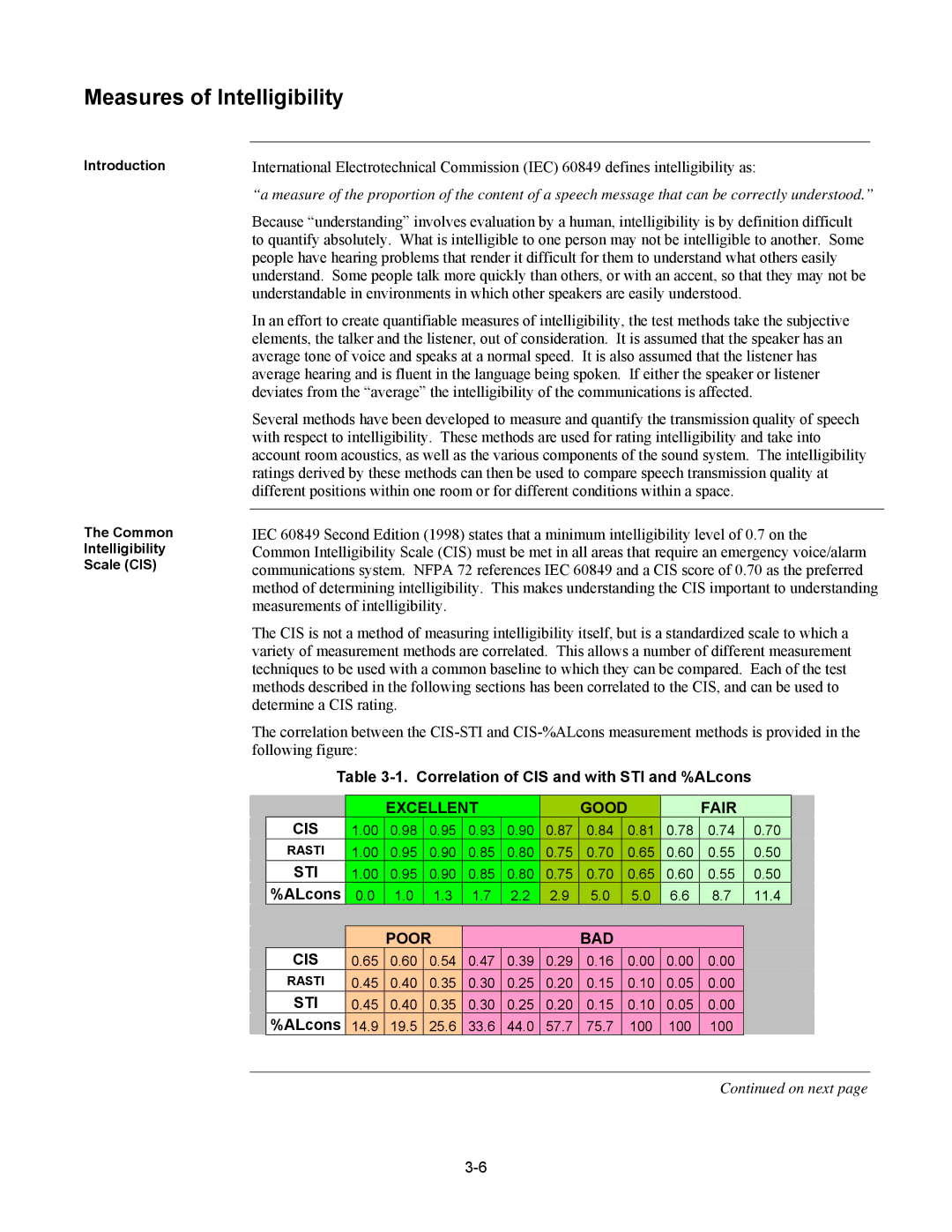
Measures of Intelligibility
Introduction
The Common
Intelligibility
Scale (CIS)
International Electrotechnical Commission (IEC) 60849 defines intelligibility as:
“a measure of the proportion of the content of a speech message that can be correctly understood.”
Because “understanding” involves evaluation by a human, intelligibility is by definition difficult to quantify absolutely. What is intelligible to one person may not be intelligible to another. Some people have hearing problems that render it difficult for them to understand what others easily understand. Some people talk more quickly than others, or with an accent, so that they may not be understandable in environments in which other speakers are easily understood.
In an effort to create quantifiable measures of intelligibility, the test methods take the subjective elements, the talker and the listener, out of consideration. It is assumed that the speaker has an average tone of voice and speaks at a normal speed. It is also assumed that the listener has average hearing and is fluent in the language being spoken. If either the speaker or listener deviates from the “average” the intelligibility of the communications is affected.
Several methods have been developed to measure and quantify the transmission quality of speech with respect to intelligibility. These methods are used for rating intelligibility and take into account room acoustics, as well as the various components of the sound system. The intelligibility ratings derived by these methods can then be used to compare speech transmission quality at different positions within one room or for different conditions within a space.
IEC 60849 Second Edition (1998) states that a minimum intelligibility level of 0.7 on the Common Intelligibility Scale (CIS) must be met in all areas that require an emergency voice/alarm communications system. NFPA 72 references IEC 60849 and a CIS score of 0.70 as the preferred method of determining intelligibility. This makes understanding the CIS important to understanding measurements of intelligibility.
The CIS is not a method of measuring intelligibility itself, but is a standardized scale to which a variety of measurement methods are correlated. This allows a number of different measurement techniques to be used with a common baseline to which they can be compared. Each of the test methods described in the following sections has been correlated to the CIS, and can be used to determine a CIS rating.
The correlation between the
Table 3-1. Correlation of CIS and with STI and %ALcons
|
|
| EXCELLENT |
|
| GOOD |
|
| FAIR |
|
| |||
| CIS | 1.00 | 0.98 | 0.95 | 0.93 | 0.90 | 0.87 | 0.84 |
| 0.81 | 0.78 | 0.74 | 0.70 |
|
| RASTI | 1.00 | 0.95 | 0.90 | 0.85 | 0.80 | 0.75 | 0.70 |
| 0.65 | 0.60 | 0.55 | 0.50 |
|
| STI | 1.00 | 0.95 | 0.90 | 0.85 | 0.80 | 0.75 | 0.70 |
| 0.65 | 0.60 | 0.55 | 0.50 |
|
| %ALcons | 0.0 | 1.0 | 1.3 | 1.7 | 2.2 | 2.9 | 5.0 |
| 5.0 | 6.6 | 8.7 | 11.4 |
|
|
|
|
|
|
|
|
|
|
|
|
|
|
|
|
|
|
|
|
|
|
|
|
|
|
|
|
|
|
|
|
|
|
|
|
| POOR |
|
|
|
|
|
|
| BAD |
|
|
|
|
|
|
| |
|
|
| CIS | 0.65 |
| 0.60 | 0.54 |
| 0.47 |
| 0.39 |
| 0.29 |
| 0.16 |
| 0.00 |
| 0.00 |
| 0.00 |
|
|
|
| RASTI | 0.45 |
| 0.40 | 0.35 |
| 0.30 |
| 0.25 |
| 0.20 |
| 0.15 |
| 0.10 |
| 0.05 |
| 0.00 |
|
|
|
| STI | 0.45 |
| 0.40 | 0.35 |
| 0.30 |
| 0.25 |
| 0.20 |
| 0.15 |
| 0.10 |
| 0.05 |
| 0.00 |
|
|
|
| %ALcons | 14.9 |
| 19.5 | 25.6 |
| 33.6 |
| 44.0 |
| 57.7 |
| 75.7 |
| 100 |
| 100 |
| 100 |
|
Continued on next page
